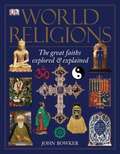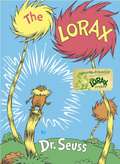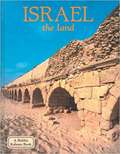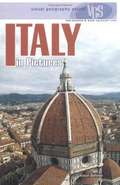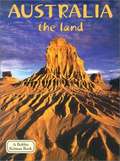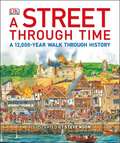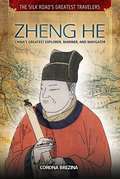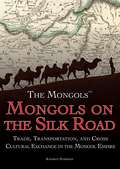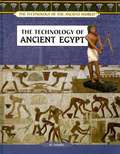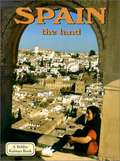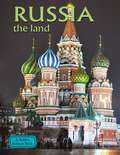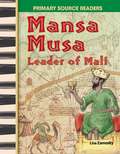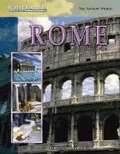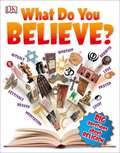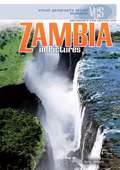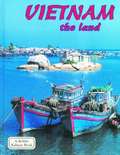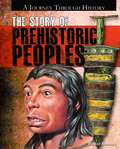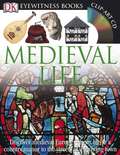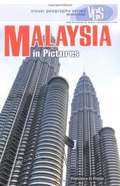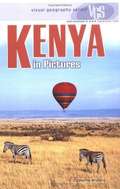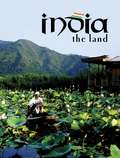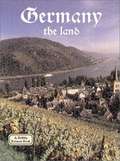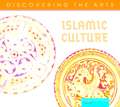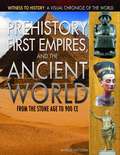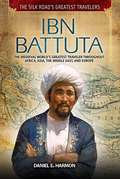Special Collections
District List: NYC Core Curriculum 6th - Social Studies
Description: The New York City Core Curriculum program aims to provide a high-quality curricula to NYC students through a seamless instructional program across grades and subjects. This list has been curated by NYCDOE for 6th Grade Social Studies materials. #nycdoe
- Table View
- List View
World Religions
by John BowkerThe Evolution of Major Faiths World Religions looks at the beliefs and practices of many different religions, from the ancient Egyptians to Zoroastrianism -- the oldest "living" religion -- and the great faiths practiced today. Each of the major faiths -- Christianity, Judaism, Hinduism, Buddhism, Jainism, Sikhism, and Islam -- is examined in detail through its sacred texts, epic imagery, key beliefs, and religious artifacts. The distinctive identities of different faiths are explored in World Religions by studying the main principles and thinking of each religion. The book's superb reproduction allows the symbolism and meaning in religious imagery and iconography to be revealed in great detail. Accessible and far-reaching, World Religions will engage the whole family as much as the serious student.
The Lorax
by SeussCelebrate nature with Dr. Seuss and the Lorax in this classic picture book about protecting the environment!
I am the Lorax. I speak for the trees.
Dr. Seuss’s beloved story teaches kids to speak up and stand up for those who can’t. With a recycling-friendly “Go Green” message, The Lorax allows young readers to experience the beauty of the Truffula Trees and the danger of taking our earth for granted, all in a story that is timely, playful, and hopeful. The book’s final pages teach us that just one small seed, or one small child, can make a difference.
Israel
by Debbie SmithExplores the land and people that make up modern Israel. This work portrays the country and its changing boundaries. It includes topics such as: the hills and deserts in Israel; how food is grown and the land made fruitful in the desert; protecting the land; Ancient cities and Jerusalem; and sacred city to three major religions.
Italy in Pictures
by Alison BehnkeA historical and current look at Italy, discussing the land, the government, the people, and the economy.
Australia
by Erinn BantingEarth did not always look as it does today. Hundreds of millions of years ago, it was covered by one enormous landmass called Pangaea. About 200 million years ago, Pangaea began to split in two. Slowly, the two pieces drifted farther apart and split into even more pieces. Eventually, the seven continents formed: North America, South America, Europe, Asia, Africa, Australia, and Antarctica. Australia and Antarctica drifted the farthest south, into the southern hemisphere.
A Street Through Time
by Dorling KindersleyThis book views a street by the river through the ages and how it has evolved.
Zheng He
by Corona BrezinaZheng He was the commander of a vast Chinese fleet known as the treasure fleet. In the early fifteenth century, he led the fleet on seven journeys throughout the South China Sea and Indian Ocean, serving as ambassador to the barbarian nations in need of a civilizing influence. Under Zheng He’s command, the Chinese treasure fleet achieved one of the most impressive maritime displays the world had ever seen. This engaging volume covers the fleet’s travels, which covered more than 40,000 miles and included sea routes along the Silk Road, to cities and kingdoms from southern Asia to east Africa.
Mongols on the Silk Road
by Kathryn HarrisonStretching across Asia and into eastern Europe and northern Africa, the Silk Road opened the world to new ideas, products, and cultures. Because the Mongols controlled so much of the territory across this network of pathways, trade between east and west flourished, spreading silk, spices, technology, and languages. In addition, the Mongols were known for their different religious traditions, including Buddhism, Islam, and Zoroastrianism, which were also “transported” along the established pathways of trade. While traveling throughout the network could be treacherous, its cross-cultural exchange paved the way for modern globalization. This vivid and lively account places sets readers on a wondrous journey of discovery along the Silk Road.
The Technology of Ancient Egypt
by M. SolodkyStudents may have heard of papyrus and the pyramids, but this insightful book outlines many of the lesser known technological advancements that were the product of a fiercely creative, intelligent, and inventive ancient society. Covering such things as mummification and elaborate tombs, The Technology of Ancient Egypt is sure to keep students on the edge of their seats. Some scholars believe that more than half of the basic inventions on which today's world depends came from ancient China. The ancient Chinese made the first iron plows in the world and also invented the wheelbarrow, the seismograph, and many other invaluable things. Readers will learn about the many technologies that the Chinese created or improved upon. Supports history-social science content standards mandating student understanding of the origins and influence of agricultural, technological, and commercial developments in key ancient civilizations. Broadens student understanding of the relationship among science, technology, and society by highlighting how major scientific and mathematical discoveries and technological innovations have affected societies throughout history.
Spain
by Noa Lior and Tara SteeleExplores Spain's varied geography from the Cantabrian Mountains in the north to the southern Sierras and the vast rivers and coastal regions of the Atlantic and Mediterranean.
Russia
by Greg NicklesDiscusses Russia's geography, history, ethnic groups, wildlife, climate, cities, economy, agriculture, transportation, and space program.
Mansa Musa
by Lisa ZamoskyMansa Musa was the king of Mali as it became one of the largest empires during the time of Musa's rule. Readers will discover the life of Mansa Musa in this appealing biography that uses vivid images, appealing maps, and stunning facts to engage children. A glossary and index work in conjunction with the easy-to-read text to teach readers about the Mali ruler, griots, Mali trade, Mecca, Malian religion, and other kings and queens
What Do You Believe?
by Dorling Kindersley Publishing StaffReligion, morality, science, and the afterlife are complex and often misunderstood subjects. What Do You Believe? is a dynamic and clear text that brings together a variety of ideas of on religion. They are clearly presented for children to understand in a clear, unbiased text, and key concepts are broken down into manageable chunks of information with keywords that are simply explained. What Do You Believe? looks at basic teachings, practices of world faiths, philosophy, and more, and delves into the meaning and purpose of life. This book promotes understanding, tolerance, and respect for people whatever they believe.
Zambia in Pictures
by Bella WatersDescribes the geography, climate, wildlife, natural resources, history, politics, culture, economy, and government of Zambia.
Vietnam - The Land
by Bobbie KalmanDescribes the geography, climate, history, cities, agriculture, transportation, business and trade, and wildlife of Vietnam.
The Story of Prehistoric Peoples
by Philip BrooksDescribes the lives of early prehistoric peoples, from the use of tools and the migration of early hominids around the world to human life during the Ice Age, the domestication of animals, and prehistoric art.
Medieval Life
by Dorling Kindersley Publishing Staff and Andrew LangleyEyewitness: Medieval Life gives the reader an in-depth look at life from the end of the Dark Ages to the Renaissance in the 15th century, in both the town and the country, and for the peasants as well as the aristocracy. Featuring artifacts, costumes, furniture, and historical illustrations, Medieval Life is a unique and compelling introduction to the people and culture of the Middle Ages.
Malaysia in Pictures
by Francesca Di PiazzaIntroduces the geography, history, religious beliefs, government, and people of Malaysia.
Kenya In Pictures
by Catherine BrobergA brief overview of Kenya's land, history, government, people, and culture.
India the Land
by Bobbie KalmanUpdated facts and statistics highlight this new second revised edition of India the Land. Spectacular photographs feature India's varied geography from snow-covered mountaintops to tropical rainforests. Learn about India's major cities, its disputed borders, foreign influences, and current challenges
Germany the Land
by Kathryn LaneIntroduces the geography, cities, transportation, economy, and wildlife of Germany.
Islamic Culture
by Atif ToorThis book describes Islamic art, from the building of the Dome of the Rock in Jerusalem in 691 to the work of Pakistani artist Shahzia Sikander, who expresses modern ideas in her miniature paintings.
Prehistory, First Empires, and the Ancient World
by Markus HattsteinReaders will be intrigued by this stunning edition, which provides an overview of periods that are less readily studied in the classroom. Readers will be excited to experience prehistory, the Stone Age, first empires, and ancient worlds. With detailed images, this curated guide of the early parts of our civilization will make all study engaging and entertaining.
Ibn Battuta
by Daniel E. HarmonIbn Battuta, a fourteenth-century Moroccan adventurer and religious scholar, was one of the most ambitious travelers of the Silk Road. Scholars estimate his lifelong journeys covered no fewer than 75,000 miles. Because of his knowledge of Muslim history and laws, he was greatly respected by the Muslim rulers he visited. His geographical records helped fill in the pieces of a mysterious world.
